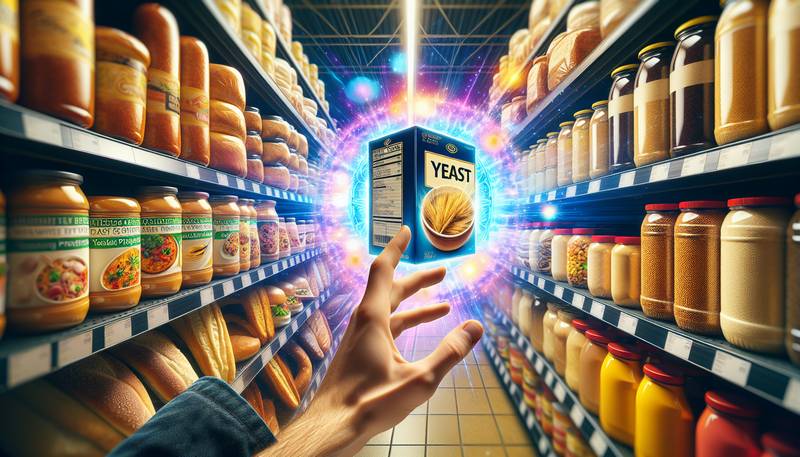Yeast Ingredients as Alternative Proteins: Potential in the Food Industry

Introduction to Yeast IngredientsPicture this: you find yourself at the grocery store, perusing the protein-packed shelves, and you stumble upon a friendly-looking package of yeast ingredients. You feel a sudden compulsion to delve into the world of alternative proteins, and you wonder, "What's the deal with yeast ingredients? Is this the missing link in my quest for a delicious and nutritious diet?" Well, friend, you've come to the right place! Let us embark on a journey through the wild and wacky world of yeast ingredients and their potential in the food industry.Yeast: More Than Just a Baking BuddyWhen you think of yeast, your mind might wander to the fluffy and delectable baked goods that line the shelves of your local bakery. But did you know that yeast has a secret life as a protein powerhouse? That's right, this humble microorganism has been flexing its protein-packed muscles in the food industry, offering a tasty and sustainable alternative to traditional animal-based proteins.But how exactly does one turn a microscopic fungus into a scrumptious and nutritious treat? Well, sit back and buckle up, as we take a whirlwind tour through the fascinating process of turning yeast into a protein-rich ingredient!The Science Behind Yeast IngredientsBefore we dive into the nitty-gritty of yeast as an alternative protein, let's take a brief detour down Science Lane to understand the basics of these fascinating microorganisms. Yeast, a member of the fungus kingdom, is a single-celled organism that reproduces by budding. This means that it splits off a smaller cell from the parent cell, creating a new yeast cell in the process. Yeast is also a champion at fermenting sugars, which is why it's often used in baking and brewing.Now, let's get to the star of the show: yeast as a protein source. The protein content in yeast varies, but it can be as high as 50% of its dry weight. To extract this protein, yeast cells are grown in a nutrient-rich environment, where they rapidly multiply and produce large amounts of biomass. This biomass is then harvested, dried, and processed into various forms, such as powders, flakes, or extracts. The final product is a versatile and protein-rich ingredient that can be used in a wide range of food applications.The Benefits of Yeast Ingredients in the Food IndustryNow that we've covered the basics of yeast ingredients, it's time to get down to the brass tacks: what makes yeast such an appealing alternative protein? Allow us to enlighten you with a few compelling benefits of yeast ingredients in the food industry:- Sustainability: With the global population expected to reach nearly 10 billion by 2050, the demand for protein-rich foods is on the rise. Yeast ingredients offer an environmentally friendly solution, as they require less land, water, and energy to produce compared to animal-based proteins.
- Nutritional value: Yeast is not only rich in protein but also contains essential amino acids, vitamins, and minerals. It's a complete protein source, making it an excellent option for those seeking to incorporate more plant-based proteins into their diets.
- Flavor enhancement: Yeast ingredients are often used to add a savory, umami flavor to various dishes. This makes them a popular choice for creating delicious meat substitutes, as well as enhancing the taste of other plant-based foods.
- Functional properties: Yeast ingredients can also improve the texture and mouthfeel of food products, making them an attractive option for manufacturers looking to create high-quality plant-based alternatives to animal products.
Yeast Ingredients in Action: Culinary CreationsNow that we've extolled the virtues of yeast ingredients, it's time to get down to the fun part: the food! From hearty main dishes to scrumptious snacks, yeast ingredients are making their mark in the culinary world.One popular application of yeast ingredients is in the development of plant-based meat alternatives. Yeast protein can be used to create delicious and satisfying meat-free products, such as burgers, sausages, and nuggets. Additionally, yeast extracts are often used to enhance the flavor of plant-based cheeses, making them taste more like their dairy-based counterparts.But yeast ingredients aren't just for creating meat and dairy substitutes. They can also be incorporated into a wide range of dishes, from soups and sauces to pasta and even baked goods. The possibilities are truly endless, so don't be afraid to get creative in the kitchen and explore the many delicious ways to include yeast ingredients in your diet.Conclusion: Embrace the Yeasty RevolutionSo, the next time you find yourself wandering the aisles of your local grocery store, pondering the potential of yeast ingredients in your quest for protein-rich sustenance, remember this: yeast is more than just a baking buddy. It's a versatile, sustainable, and downright delicious alternative protein that's making waves in the food industry. So, go forth, ye fearless food adventurer, and embrace the yeasty revolution!
|
|







